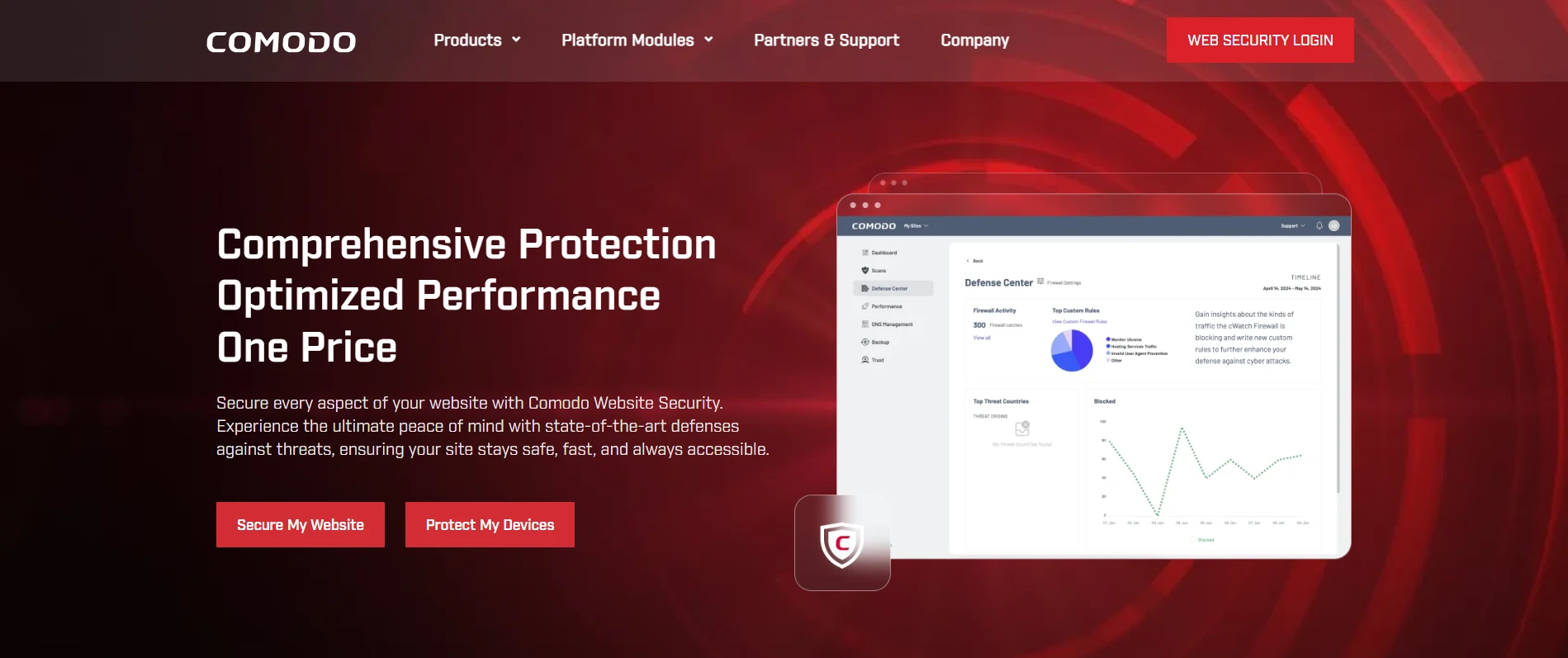Key Takeaway
A redesign of Comodo Cybersecurity's landing page focused on addressing user pain points and simplifying complex messaging, resulted in a 17.5% increase in visitor-to-lead conversion rates. The new approach effectively communicated value to both technical and non-technical audiences, leveraging an initial conversion rate of 49%.
Client Overview
Comodo is a leading global cybersecurity provider with a 44% share of the SSL certificate market, protecting 13.9% of the world's web domains. The company offers free forensic analysis through its landing page to convert visitors into demo session leads.

Opportunity Background
Comodo's landing page was performing well with a 49.1% conversion rate, but we wanted to optimize it further. Through qualitative research, we identified several critical friction points:
| Research Findings | Conclusion | Hypothesis |
|---|---|---|
| Users didn't understand the value of free forensic analysis | A short, one-screen interface wasn't enough to explain the value of a technical solution | Explaining the value proposition in a more user-friendly way will improve the perceived benefit of the solution |
| Technical jargon confused non-technical users | Some users lacked the knowledge to understand the technical details | Simplifying the language will increase understanding and engagement |
| Fear was a key driver of decision-making | Users were motivated by fear of malware vulnerabilities | Using a "pain - more pain - hope - solution - call to action" framework will drive conversions |
| Objections and questions were not addressed | Users lacked confidence in signing up for the demo session | Addressing common concerns in the copy will reassure users and drive conversions |
These findings revealed a clear opportunity to improve communication, simplify the value proposition, and address pain points more effectively.
Solution
To address the challenges users faced on Comodo's landing page, we implemented a complete redesign emphasizing clear communication, emotional engagement, and user trust. Here's how each key update was executed:
- Simplified messagingThe original page was filled with technical jargon that alienated non-technical users. We implemented a new copywriting solution that highlighted the forensic analysis's practical benefits, such as identifying malware vulnerabilities and preventing attacks. Concise explanations ensured users quickly understood the value without feeling overwhelmed.
- Pain-Driven copy frameworkWe used the "Pain - More Pain - Hope - Solution - Call to Action" framework to create an emotionally engaging narrative. The page began by highlighting the risks of malware and the potential consequences of leaving vulnerabilities unaddressed. It then transitioned to a reassuring tone, presenting Comodo as a trusted cybersecurity provider. The call to action encouraged immediate sign-ups by emphasizing urgency and trust, with message "Sign Up Now for a Free Demo" urging users to take immediate action and secure their systems.
- Increase user confidenceTo address concerns, we introduced a FAQ section that clarified how the analysis worked and what users could expect from the demo. The page design was streamlined to remove distractions and focus users on the message and call to action, creating a smooth path to conversion.
Results
The redesigned landing page increased visitor-to-lead conversion rates by 17.5%. Users spent more time on the page, reading and scrolling further into the content. This case shows how targeted optimizations can drive significant growth, even for high-performing pages.